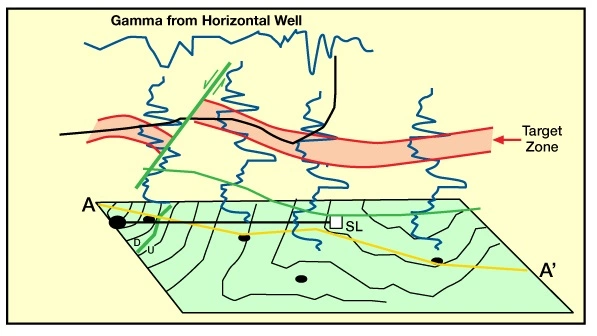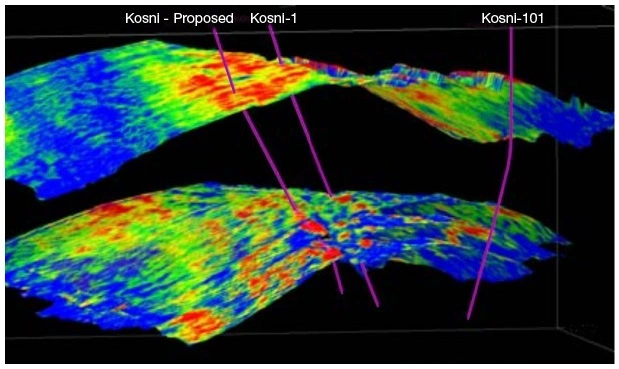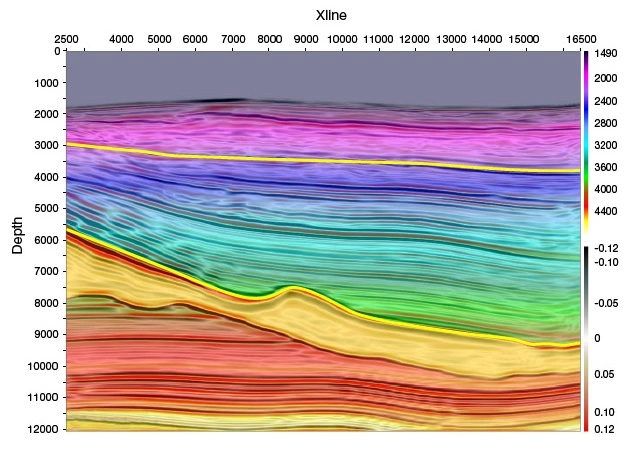Assignment Seismic Interpretation Methods
You and your exploration team are in a new frontier area. The team has recently acquired new 3D seismic and are doing extensive stratigraphic analyses around an important tight limestone formation. You have been tasked with doing seismic modeling at the base of the limestone to see how the seismic waveforms compare with known seismic interfaces so that you can identify the interfaces of probable lithologies beneath the limestone.
Describe the expected seismic responses for a typical twenty-five Hertz wavelet where the rock above the interface is a tight limestone, and the rock below is the following (as shown in Figure 1):
A. Fractured, gas-bearing limestone
B. Fractured, water-saturated limestone
C. Gas sandstone
D. Oil sandstone
E. Water-saturated sandstone

Solution
The top layer of tight limestone has a high velocity, therefore:
A. When the next layer is fractured, gas-bearing limestone, which has a lower velocity, the seismic response would result in a strong negative reflection coefficient.
B. When the next layer is fractured, water-saturated limestone, which has a low velocity, the seismic response would result in a negative reflection coefficient.
C. When the next layer is gas sandstone, which has a very slow velocity, the seismic response would result in a strong negative reflection coefficient.
D. When the next layer is oil sandstone, which has a lower velocity than tight limestone, the resulting seismic section would show a strong negative reflection coefficient.
E. When the next layer is water-saturated sandstone, which has a low velocity, the resulting seismic section would show a negative reflection coefficient.
Assessment Seismic Interpretation Methods
1. Which of the following are applications for crosswell seismic? (Select all that apply.)
A .Improved reserves estimation and asset valuation
B .In-fill drilling planning
C .Determination of the magnetic field declination
D .Detailed time-lapse production monitoring
2. Crosswell seismic provides a detailed view of ________ to estimate reserves and plan a better field development.
3. Which reflectivity zone describes where sands have compacted and consolidated until their acoustic impedance values are greater than those of the associated shales, due to the sand/shale crossover of velocities?
A .Doesn’t describe any zone
B .Zone 3
C .Zone 1
D .Zone 2
4. Analysis of which of the following characteristics of the seismic signal is an important step in understanding the geological lateral variations, or stratigraphic model, of the subsurface? (Select all that apply.)
A .Shape
B .Polarity
C .Amplitude
D .Time
5. What is the purpose of seismic modeling?
A .To confirm the correct seismic processing datum
B .To identify the correct magnetic inclination
C .To assess potential well locations
D .To test the validity of a particular interpretation
6. We can determine the correct wavelet to use for seismic ________ by comparing the modeled results to the __________ data.
7. We can determine the correct wavelet to use for seismic __________ by comparing the modeled results to the __________ data.
8. Crosswell data can help to bridge the gap between surface seismic and __________, thus providing a detailed seismic picture of the reservoir interval between two wells.
9. What feature on a seismic section is described by the following statements?
- These hydrocarbon indicators are another kind of amplitude anomaly.
- They occur at the gas/oil or oil/water interfaces.
- These are horizontal compared to the surrounding geological dip.
A .Dim spots
B .Sun spots
C .Flat spots
D .Bright spots
Recommended for You
Interpretation with Seismic Attributes
 Petro Shine The Place for Oil and Gas Professionals.
Petro Shine The Place for Oil and Gas Professionals.



